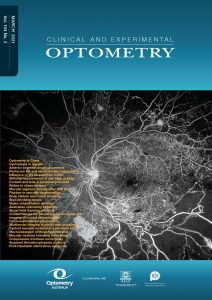1:30min

By Helen Carter
Journalist
Optometry Australia has released new clinical guidelines for infection control which include a new, improved section on pandemics and latest COVID recommendations.
Optometry Australia’s infection control guidelines 2020 are available now online ahead of inclusion in the April special issue of Clinical and Experimental Optometry. Optometry Australia members can access the guidelines immediately via Taylor & Francis online. The guidelines are available now as a free access article and will also be included in the April special issue.
It is the fourth time the guidelines have been reviewed since first published in 1986. They deliver a revision of our 2016 guidelines, providing an update on current infection control best practice, whilst recognising the practicalities of working in an optometry clinic.
They incorporate information presented in our Infection control and COVID-19 fact sheet released during the coronavirus pandemic in 2020 but provide more up-to-date and comprehensive information including advice on personal protective equipment (PPE), masks, and advice about optometric eye care during a pandemic.
The latest guidelines were reviewed by Optometry Australia’s Policy and Standards Advisor Kerryn Hart and Chief Clinical Officer Luke Arundel, Professor Fiona Stapleton and Dr Nicole Carnt from the School of Optometry and Vision Science, The University of New South Wales and Ka-Yee Lian from EyeQ Optometrists, Camberwell.
New normal of rigorous infection control
‘Optometrists have taken their infection control processes to a more rigorous level during the COVID-19 pandemic,’ the guidelines state.
‘This presents an opportunity to create a ‘new normal’ where, amongst others: the appropriate use of PPE is standard; slitlamp breath shields are a permanent fixture; reprocessing of reusable equipment is in line with current recommendations; and environmental cleaning is part of the daily routine.
‘For the safety of optometrists, practice staff, patients and practice visitors, infection control measures should be adopted to minimise the risk of infection transmission.
‘Practitioners should use the information available in these guidelines to inform their infection control protocols and procedures.’

Photo, Kelly Sikkema, Unsplash
Standard precautions and transmission-based precautions
‘The whole format was updated to make it easier to read, separating standard (routine) and transmission-based precautions into two sections,’ Kerryn said.
‘Standard precautions are implemented in routine optometry practice, and this section covers hand hygiene, personal protective equipment, safe handling and disposal of sharps, routine environmental cleaning, reprocessing of reusable equipment, instruments and contact lenses, respiratory hygiene and cough etiquette, aseptic and clean technique, and waste management.
‘Transmission or risk-based precautions are recommended for optometry staff and/or patients when standard precautions alone may not be sufficient to prevent the spread of an infectious agent and when patients are known or suspected of harbouring an infectious agent. This section is particularly relevant during the COVID-19 pandemic.’

Image, coronavirus by CDC on Unsplash
Patients and optometrists are most likely to be exposed to infectious agents from human sources, instruments and equipment, or the environment.
Optometrists may also be exposed to blood, tears and mucous membranes or to infection during assessment of patients or during procedures.
Other features include a comprehensive list of disinfection or sterilisation techniques to use on reusable devices, instruments or equipment in optometric practice, plus a list of updated equipment in Appendix 2.
Draft National Safety and Quality Primary Healthcare Standards, due to be published in 2021, state primary healthcare services must identify and mitigate all infection and prevention control risks, making it imperative for optometrists and practice staff to adopt necessary measures outlined in the guidelines to minimise risks of infection transmission in the workplace, especially during a pandemic.
Infection control survey thanks and winners
Thanks also to the many members who completed our recent infection control survey. Your input will help us improve our services for members in this field.
The four winners of $200 Mastercard gift vouchers for their responses are Paul Graveson, Madeleine Jones, Elizabeth Shewan and Bianca Nesci.

Tagged as: Clinical & Experimental Optometry (CXO), Clinical practice guides, COVID-19, Patient management, Practice equipment